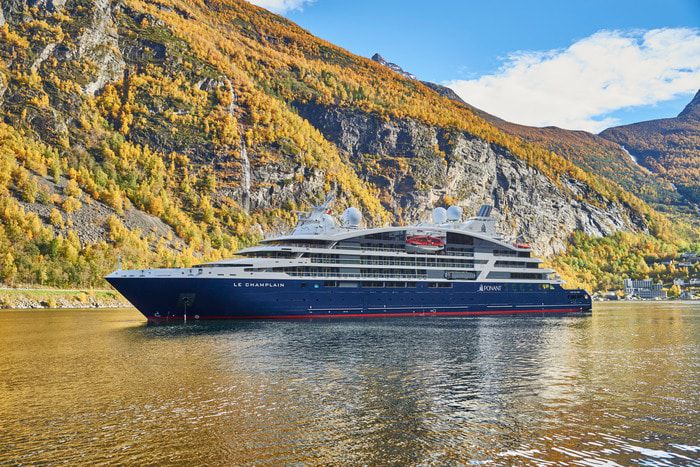Cultural treasures and Scandinavian panoramas
From Stockholm to Edinburgh, PONANT brings you a brand-new 12-day cruise aboard Le Champlain, through the landscapes and cultural treasures of Scotland and Scandinavia.
Throughout your journey, you will benefit from an excursion included per person per port of call, to choose from a selection offered by PONANT. During this cruise, learn more about Norway’s maritime history by discovering the Fram and Kon-Tiki museums in Oslo; go on a magnificent hike along the coast in Hove, from Arendal; or take a guided tour of Egersund and enjoy a beer tasting at a distillery. The diversity of experiences on offer promises you intense and varied moments (to discover the full range of excursions, go to the itinerary tab).
Le Champlain will sail to the Swedish island of Gotland and call at Visby, a site that was important for the Hanseatic League in the Baltic Sea around the 13th century. A UNESCO Heritage Site, this once-opulent city still has remarkably well-preserved ramparts, public buildings, merchant houses and warehouses.
Karlskrona, whose history is intrinsically linked to the Swedish Navy, boasts exceptional UNESCO-listed architecture that is characteristic of late-17th-century European naval cities.
Then your ship will chart a course towards the charming town of Gudhjem, on the small Danish island of Bornholm, which is greatly appreciated by the Danish for its variety of landscapes ranging from granite to great sandy beaches.
Copenhagen, city of art and history, the charming Danish capital will not fail to surprise you with its easy lifestyle, cultural richness and exceptional heritage.
The next step of your voyage will take you to Gothenburg, in Sweden. The country’s main port and labelled City of Literature by UNESCO, it can be discovered via its pretty canals, cultural treasures and emblematic districts.
Le Champlain will then set a course for Norway, its stunning scenery and its incredible cities and towns. Sitting on the edge of a fjord covered in greenery, Oslo, the creative, multicultural, radiant capital of Norway reflects a deep attachment to its Viking and Scandinavian roots. You will then sail along the coast to Arendal, called the Venice of the North due to its canals. On the southern coast, the colourful facades of Egersund stretch out along the curve of a fjord and the town’s industrial past, centred on fishing and earthenware production, is revealed.
Le Champlain will sail towards Kirkwall, capital of the Orkney Islands, where numerous seabirds, such as gannets and European shags, have taken up residence.
The last stage of your cruise will take you to Aberdeen. Its magnificent coast, boasting a remarkable nature reserve and majestic castles nearby, make Scotland’s third largest city, full of Gothic charm, an exceptional port of call.
Finally, you will reach Edinburgh, city of history and labelled city of literature by UNESCO, your port of disembarkation.
When searching for a luxury yacht expedition cruise, there’s one name above all else that you need to know – Ponant Cruises. Founded in 1988 by former French Merchant Navy officers, Ponant combines succulent luxury with authentic adventures on all seven continents.
From classic Mediterranean itineraries and Caribbean sailings, to bucket-list expeditions around Greenland and Antarctica, Ponant cruises proudly counteract the banality of mainstream voyages with a unique take on the concept of small-ship cruising. It’s the absolute trip of a lifetime.

Featuring innovative and environmentally-friendly equipment, elegantly designed cabins, spacious suites with large windows, and lounge areas that open onto the outside, this new limited-capacity yacht boasting just 92 cabins and suites will offer you a truly unique cruising experience.



